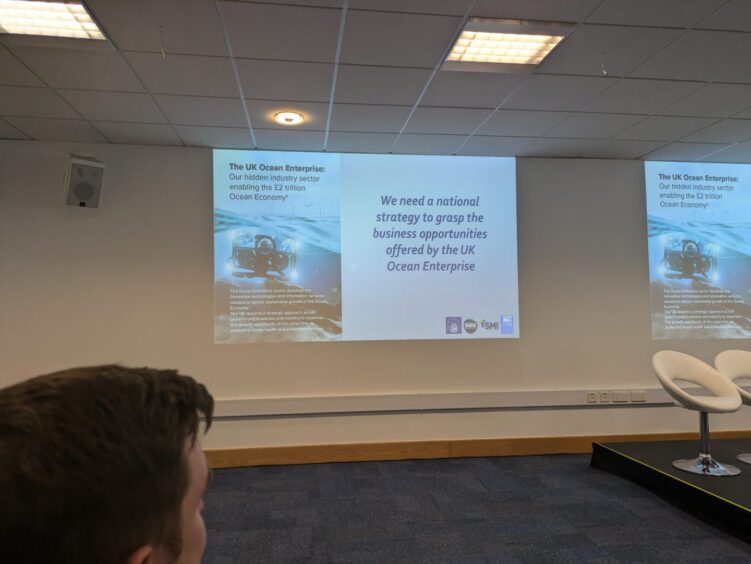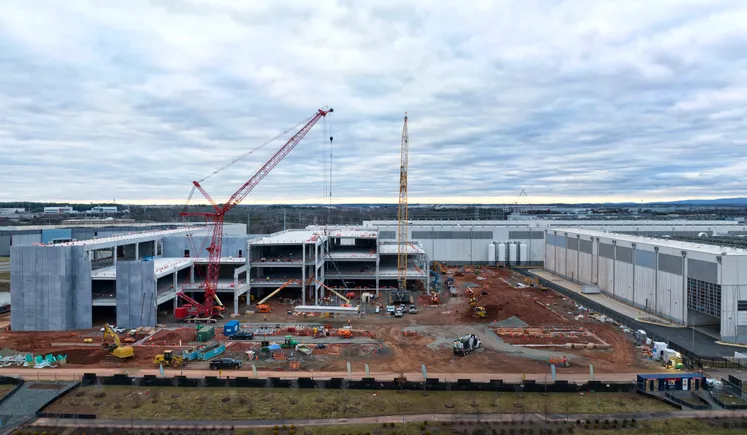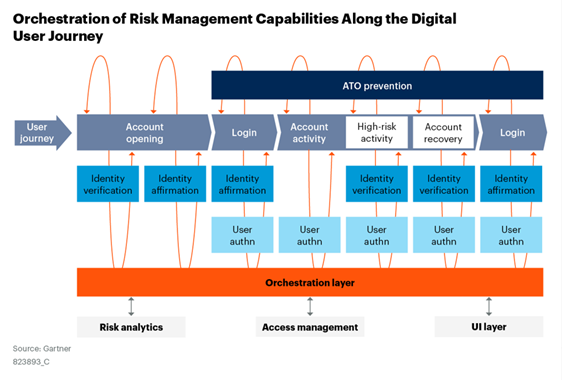
GOLDEN, COLORADO—U.S. Secretary of Energy Chris Wright received strong support from the Department of Energy’s (DOE) National Lab and nuclear weapons assembly plant directors after he announced expedited permitting reforms for construction projects on Energy Department lands. These common sense reforms will save at least hundreds of millions of taxpayer dollars and rapidly accelerate project completion dates, helping better unleash American innovation, restore energy dominance, and modernize America’s nuclear stockpiles.
What America’s National Lab Directors Are Saying:
“The recent guidance issued by the Department of Energy related to how the Laboratory executes our construction activities is intended to provide new tools to improve our operations and increase our effectiveness. This guidance will have positive impacts on our construction scheduling, budgeting, work execution and safety. We believe this guidance will have a net positive impact on most of our construction activities now costing less than $300,000,000 including, Energetic Materials Characterization modular facilities and Pajarito Corridor Office Complexes (PCOCs). The new guidance will save the federal government tens of millions of dollars on projects at LANL like these by reducing costs and avoiding overruns due to delays. In addition, allowing the Laboratory to better utilize existing Occupational Health and Safety Administration standards (OHSA) will increase the number of construction companies that can bid on work at LANL and provide a more competitive bidding process that will assist in lowing the costs of construction.” — Los Alamos National Laboratory Director Thom Mason
“I appreciate Secretary Wright’s bold action to empower the National Laboratories to more efficiently deliver transformative scientific and technological outcomes that will benefit American taxpayers. This is the most substantive and quickest change in improving lab operations that I have seen in my many years with DOE.” —Pacific Northwest National Laboratory Director Dr. Steven Ashby
“Secretary Wright’s decisive actions in easing permitting rules and regulations for construction projects at the Department of Energy’s National Labs are welcome progress. These reforms are a significant step forward in accelerating critical infrastructure improvements, ensuring that our National Labs can continue their vital work. Ames National Laboratory is soon to launch several major infrastructure improvement projects across its campus, projects that are necessary to continue to meet our scientific mission and the mission of the Department of Energy. These reforms will expedite our ability to meet the needs of our researchers and engineers, and continue our pursuit of delivering critical materials solutions to the nation.” — Ames National Laboratory Director Adam Schwartz
“Sandia National Laboratories welcomes the Department of Energy’s move to simplify permitting for critical infrastructure upgrades. These improvements will help us respond faster to national security threats and technology challenges. One clear example of where streamlined permitting has the potential to benefit Sandia is the planned Power Sources Capability project. This new $400 million facility will replace a 75-year-old structure that serves as the primary research, design, surveillance and production location for power sources within the Nuclear Security Enterprise. That includes a range of advanced technologies such as primary batteries, thermal batteries, and energy conversion systems. Streamlined permitting processes could accelerate construction timelines, allowing us to quickly consolidate operations, improve efficiency and better support our employees with a modern and reliable workspace. Ultimately, this new facility ensures Sandia can continue providing innovative, reliable power source solutions essential to national defense and security.” — Sandia National Laboratories Director James Peery
“I’m excited to see Energy Secretary Wright taking significant early action to help the National Labs — including Brookhaven — operate more effectively. In particular, the changes announced last week will help us build America’s next collider, the Electron-Ion Collider, faster and more efficiently. His ongoing engagement with the national lab directors is greatly appreciated and will help us all achieve our — and DOE’s — crucial missions.” —Brookhaven National Laboratory Director JoAnne Hewett
“As the Chair of the National Laboratory Directors’ Council, I want to thank Secretary Wright and his team for acting quicky to remove bureaucratic barriers and create operational flexibility for the DOE National Labs. These decisive actions will have immediate and long-lasting positive impacts on operations, accelerating the delivery of the research and development infrastructure needed to ensure global leadership in energy, science and technology. I applaud Secretary Wright’s bias for action and look forward to continuing to partner with him and DOE staff to identify and develop further actions to enhance efficiency.” — Idaho National Laboratory Director John Wagner
“Pantex anticipates receiving contractual direction associated with the implementation of the recent DOE Secretarial Order released on March 21, 2025 regarding strengthening efficiency and mission execution throughout the department. We anticipate a number of benefits that will improve our ability to deliver the mission at Pantex once the changes are incorporated.” — Pantex Nuclear Weapons Assembly Plant President Dr. Kelly Beierschmitt
“Because of the transformative updates to DOE Order 413.3B and the culture of efficiency it drives, Jefferson Lab will be able to more quickly occupy the Applied Research Center – a request for proposal approval that would normally take 6 months only took a few days. Similarly, revising the compensation clauses affords Jefferson Lab the flexibility needed to attract and retain top-tier talent. This could result in up to 40% time savings in onboarding key personnel critical to our mission at Jefferson Lab. These recent actions reflect a commitment to innovation and operational excellence, and position Jefferson Lab to more effectively deliver the scientific and technological advancements essential to the nation.” —Thomas Jefferson National Accelerator Facility Director Kimberly Sawyer
“NETL is a proud member of the DOE National Laboratory system and excited to be a part of Secretary Wright’s reform activities that will strengthen the efficiency and mission execution of the national labs. We look forward to pursuing the opportunity to expand the delegated project authority at DOE’s fossil energy government-owned and government-operated research lab. Streamlining the strategic partnership projects/cooperative research and development agreement process will accelerate America’s energy innovation.” — National Energy Technology Laboratory Director Marianne Walck
“As the energy systems laboratory, NREL stands ready to support the Secretary of Energy and the administration in shaping our nation’s energy future. Reducing barriers to innovation will enable us to move faster, increase value, and accelerate science and engineering for advanced energy solutions. This will unleash America’s energy innovation—making energy more abundant, reliable, secure, and affordable for all Americans” — National Renewable Energy Laboratory Director Dr. Martin Keller
“Thank you Secretary Wright for your efforts to ease burdensome rules and regulations at our country’s 17 National Labs. These reforms are vital to helping the Labs more efficiently and effectively fulfill the national labs’ missions and ensure the U.S. remains the world leader in advanced science and technology. As the Secretary has said, ‘We must protect and accelerate the work of the Department’s national laboratory network to secure America’s competitive edge and security.'” — Lawrence Berkeley National Laboratory Director Mike Witherell
“Argonne National Laboratory strongly supports Secretary Chris Wright’s actions to streamline permitting and modernize project delivery across the DOE National Laboratories. These reforms will enhance Argonne’s ability to advance cutting-edge science and technology with greater agility and impact—accelerating innovation, reducing delays, and focusing resources on mission execution. By lifting these administrative rules, the Department is empowering Argonne and its peers to more effectively contribute to national priorities in energy, security, and scientific leadership. We appreciate Secretary Wright’s vision and commitment to helping drive this new era of innovation and operational excellence.” — Argonne National Laboratory Director Paul Kearns
“Thank you to U.S. Department of Energy Secretary Chris Wright for taking action to help the labs more efficiently and effectively fulfill our critical missions. I greatly appreciate his early and active engagement with the national lab system.” — Oak Ridge National Laboratory Director Stephen Streiffer
“The Princeton Plasma Physics Laboratory extends appreciation for the construction-related reforms outlined in Secretary Wright’s March 21 memo. Thanks to the Department of Energy’s support through initiatives like the Science Laboratories Infrastructure (SLI) program, we have been able to upgrade our facilities, enabling world-class science that benefi ts the U.S. and humanity. As we embark on the construction of the Princeton Plasma Innovation Center — our first new building in almost 50 years — we’re excited to establish a state-of-the-art hub for fusion research and plasma science that will drive scientific innovation and uphold U.S. leadership in critical industries. We are eager to see how reforms implemented under Secretary Wright’s leadership will accelerate construction processes, enabling us to deliver on mission critical facilities as we enter a new era at PPPL. We are thankful for Secretary Wright’s commitment to advancing energy abundance and for being a strong advocate for the national labs. As a longstanding leader in the science and engineering behind the development of fusion, a potentially limitless energy source, PPPL looks forward to collaborating with Secretary Wright and the DOE staff to ensure energy resiliency. Secretary Wright’s leadership is instrumental and will allow the National Labs to continue producing groundbreaking research.” — Princeton Plasma Physics Laboratory Director Steve Cowley
“At Fermi National Accelerator Laboratory, we are grateful for Secretary Wright’s early and active engagement with the national lab system. These decisive actions will strengthen the national labs with greater efficiency and effectiveness to fulfill their critical missions. These reforms will provide increased productivities for Fermilab’s construction projects in support of the lab’s growth in particle physics and breakthroughs in emerging fields such as quantum science and AI. As a global leader in fundamental research, Fermilab depends on the kind of forward-thinking leadership shown by Secretary Wright to remain at the cutting-edge of discovery. We look forward to building on this momentum in partnership with DOE to keep Fermilab as the country’s premier particle physics laboratory delivering transformative science.” — Fermi National Accelerator Laboratory Interim Director Young-Kee Kim
###






















